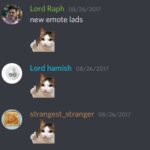The world of Cat Species is incredibly diverse, ranging from the majestic tiger to the domestic cat curled up on your lap. Among these fascinating felines, the rusty-spotted cat stands out as the smallest and lightest of them all. Recently, this elusive creature has made headlines with a new sighting in West Bengal, an Indian state bordering Bangladesh. This exciting discovery, reported by the Times of India (TOI), highlights the presence of this rare cat species in regions spanning India, Nepal, and Sri Lanka, areas where human encounters are exceptionally scarce.
 A small, rusty-spotted cat with distinctive spots on its fur, blending into a natural habitat.
A small, rusty-spotted cat with distinctive spots on its fur, blending into a natural habitat.
The Felidae Conservation Fund, a dedicated organization focused on wild cat species, classifies the rusty-spotted cat as near-threatened. Historically, a significant threat to these animals has been mistaken identity; their spotted coats led to them being confused with baby leopards and consequently hunted. This misidentification underscores the vulnerability of even lesser-known cat species to human activities and habitat encroachment.
This recent appearance in West Bengal is not just a noteworthy event for cat enthusiasts; it carries positive implications for the local ecosystem. According to Anjan Guha, a divisional forest officer in Purulia, West Bengal, the presence of such a sensitive and rare lesser cat species is a strong indicator of a healthy and thriving forest ecosystem. He stated to TOI, “Such a rare and sensitive lesser cat will only survive in a forest where it gets a favourable ecosystem … The recent movement by tigers, presence of leopards and now this lesser cat also show that the wild food chain is being maintained in the forests here.” This suggests a balanced food chain and a supportive environment capable of sustaining a variety of wildlife, including these delicate cat species.
Supporting this positive outlook, the 2023 India State Forest Report revealed an encouraging increase in green cover in Purulia, expanding by 4 square kilometers (1.5 square miles). This expansion of natural habitat is crucial for the survival of various species and contributes to the overall health of the planet.
 A broader view of a forest landscape, representing the ecosystem where rare cat species like the rusty-spotted cat thrive.
A broader view of a forest landscape, representing the ecosystem where rare cat species like the rusty-spotted cat thrive.
The broader context of rare animal species conservation, including various cat species, is intrinsically linked to the well-being of ecosystems and, consequently, human health. The World Health Organization emphasizes the critical role of biodiversity in maintaining balanced ecosystems. These ecosystems provide essential services such as clean air and water, climate stabilization, and disease control. Disruptions to these delicate balances, often due to habitat loss and human impact, can lead to scarcity of fresh water and food, ultimately impacting human health negatively.
While challenges remain in the realm of global conservation, success stories like the rusty-spotted cat sighting offer a beacon of hope. Around the world, dedicated efforts are yielding positive results. In the United States, innovative approaches like cloning are being explored to bolster populations of endangered species. The successful reproduction of a cloned black-footed ferret in 2024 exemplifies this promising avenue. Similarly, in Orkney, Scotland, the eradication of invasive stoats has allowed the local ecosystem to regain its natural equilibrium. These diverse conservation wins, alongside the sighting of the rusty-spotted cat, contribute to a growing narrative of hope and progress in protecting our planet’s biodiversity.
The rediscovery of the rusty-spotted cat in a new location provides valuable insights for focused conservation strategies. Tiasa Adhya, a member of the IUCN Cat Specialist Group, an organization dedicated to wild cat conservation, highlighted the significance of this finding to TOI, stating, “This new record is a significant contribution to the puzzle.” Each new piece of information about rare cat species like the rusty-spotted cat helps build a more complete picture, enabling more effective and targeted conservation actions to safeguard these precious animals and the ecosystems they inhabit.

